Integration of Electric Springs and Multi-Port Transformers—A New Solution for AC Microgrids with Renewable Energy Sources
Abstract
:1. Introduction
2. Fully Isolated vs. Non-Isolated ES Topology
2.1. Non-Isolated ES Topology
2.2. Non-Isolated ES Topology Operation
2.3. Fully Isolated ES Topology
2.4. Fully Isolated FPT-Based ES Topology
3. Control-Oriented Analysis of Fully Isolated ES Topology
3.1. Fully Isolated TPT-Based ES Topology
3.2. Fully Isolated FPT-Based ES Topology
4. New Applications
4.1. Grid-Connected CL
4.2. CL of Mixed Types
5. Simulations and Discussions
5.1. Grid-Connected CL
5.2. CL of Mixed Types
6. Experimental Results
6.1. Fully Isolated TPT-Based ES Setup Test
6.2. Fully Isolated FPT-Based ES Setup Test
7. Conclusions
Acknowledgments
Author Contributions
Conflicts of Interest
References
- Guerrero, J.M.; Vasquez, J.C.; Matas, J.; de Vicuna, L.G.; Castilla, M. Hierarchical control of droop-controlled AC and DC microgrids—A general approach toward standardization. IEEE Trans. Ind. Electron. 2011, 58, 158–172. [Google Scholar] [CrossRef]
- Cheng, M.; Zhu, Y. The state of the art of wind energy conversion systems and technologies: A review. Energy Convers. Manag. 2014, 88, 332–347. [Google Scholar] [CrossRef]
- Han, J.; Solanki, S.K.; Solanki, J. Coordinated predictive control of a wind/battery microgrid system. IEEE J. Emerg. Sel. Top. Power Electron. 2013, 1, 296–305. [Google Scholar] [CrossRef]
- Kienzle, F.; Ahcin, P.; Andersson, G. Valuing investments in multi energy conversion, storage, and demand-side management systems under uncertainty. IEEE Trans. Sustain. Energy 2011, 2, 194–202. [Google Scholar] [CrossRef]
- Krishnaswami, H.; Mohan, N. Three-port series-resonant DC–DC converter to interface renewable energy sources with bidirectional load and energy storage ports. IEEE Trans. Power Electron. 2009, 24, 2289–2297. [Google Scholar] [CrossRef]
- Chien, L.J.; Chen, C.C.; Chen, J.F.; Hsieh, Y.P. Novel three-port converter with high-voltage gain. IEEE Trans. Power Electron. 2014, 29, 4693–4703. [Google Scholar] [CrossRef]
- Strunz, K.; Abbasi, E.; Huu, D.N. DC microgrid for wind and solar power integration. IEEE J. Emerg. Sel. Top. Power Electron. 2014, 2, 115–126. [Google Scholar] [CrossRef]
- Hui, S.Y.R.; Lee, C.K.; Wu, F. Electric springs—A new smart grid technology. IEEE Trans. Smart Grid 2012, 3, 1552–1561. [Google Scholar] [CrossRef]
- Tan, S.C.; Lee, C.K.; Hui, S.Y.R. General steady-state analysis and control principle of electric springs with active and reactive power compensations. IEEE Trans. Power Electron. 2013, 28, 3958–3969. [Google Scholar] [CrossRef]
- Lee, C.K.; Hui, S.Y.R. Input AC Voltage Control Bi-Directional Power Converters. U.S. Patent Application 13/907,350, 5 December 2013. [Google Scholar]
- Yan, S.; Tan, S.C.; Lee, C.K.; Hui, S.Y.R. Electric springs for reducing power imbalance in three-phase power systems. IEEE Trans. Power Electron. 2015, 30, 3601–3609. [Google Scholar] [CrossRef]
- Krishnanand, K.R.; Hasani, S.M.F.; Soni, J.; Panda, S.K. Neutral current mitigation using controlled electric springs connected to microgrids within built environment. In Proceedings of the IEEE Energy Conversion Congress and Exposition (ECCE), Pittsburgh, PA, USA, 14–18 September 2014; pp. 2947–2951.
- Wang, Q.; Cheng, M.; Chen, Z.; Wang, Z. Steady-state analysis of electric springs with a novel δ control. IEEE Trans. Power Electron. 2015, 30, 7159–7169. [Google Scholar] [CrossRef]
- Wang, Q.; Cheng, M.; Jiang, Y. A novel controller of electric springs based on Bode diagram optimization. J. Power Electron. 2016, 4, 1396–1406. [Google Scholar] [CrossRef]
- Chen, X.; Hou, Y.; Tan, S.C.; Lee, C.K.; Hui, S.Y.R. Mitigating voltage and frequency fluctuation in microgrids using electric springs. IEEE Trans. Smart Grid 2015, 6, 508–515. [Google Scholar] [CrossRef]
- Mok, K.T.; Tan, S.C.; Hui, S.Y.R. Decoupled power angle and voltage control of electric springs. IEEE Trans. Power Electron. 2016, 31, 1216–1229. [Google Scholar] [CrossRef]
- Wang, W.; Yan, L.J.; Zeng, X.J.; Fan, B.; Guerrero, J.M. Principle and design of a single-phase inverter based grounding system for neutral-to-ground voltage compensation in distribution networks. IEEE Trans. Ind. Electron. 2017, 64, 1204–1213. [Google Scholar] [CrossRef]
- Luo, X.; Lee, C.K.; Ng, W.M.; Yan, S.; Chaudhuri, B.; Hui, S.Y.R. Use of adaptive thermal storage system as smart load for voltage control and demand response. IEEE Trans. Smart Grid. 2016. [Google Scholar] [CrossRef]
- Mok, K.T.; Yang, T.B.; Tan, S.C.; Hui, S.Y.R. Distributed grid voltage and utility frequency stabilization via shunt-type electric springs. In Proceedings of the IEEE Energy Conversion Congress and Exposition (ECCE), Montreal, QC, Canada, 20–24 September 2015; pp. 3774–3779.
- Moretti, M.; Djomo, S.N.; Azadi, H.; May, K.; Vos, K.D.; Passel, S.V.; Witters, N. A systematic review of environmental and economic impacts of smart grids. Renew. Sustain. Energy Rev. 2017, 68, 888–898. [Google Scholar] [CrossRef]
- Fera, M.; Macchiaroli, R.; Iannone, R.; Miranda, S.; Riemma, S. Economic evaluation model for the energy demand response. Energy 2016, 112, 457–468. [Google Scholar] [CrossRef]
- Soares, J.; Ghazvini, M.A.F.; Borges, N.; Vale, Z. A stochastic model for energy resources management considering demand response in smart grids. Electr. Power Syst. Res. 2017, 143, 599–610. [Google Scholar] [CrossRef]
- Fera, M.; Iannone, R.; Macchiaroli, R.; Miranda, S.; Schiraldi, M.M. Project appraisal for small and medium size wind energy installation: The Italian wind energy policy effects. Energy Policy 2014, 74, 621–631. [Google Scholar] [CrossRef]
- Liao, Z.J. The evolution of wind energy policies in China (1995–2014): An analysis based on policy instruments. Renew. Sustain. Energy Rev. 2016, 56, 464–472. [Google Scholar] [CrossRef]
- Ayoub, N.; Musharavati, F.; Pokharel, S.; Gabbar, H.A. Risk based life cycle assessment conceptual framework for energy supply systems in large buildings. J. Clean. Prod. 2015, 107, 291–309. [Google Scholar] [CrossRef]
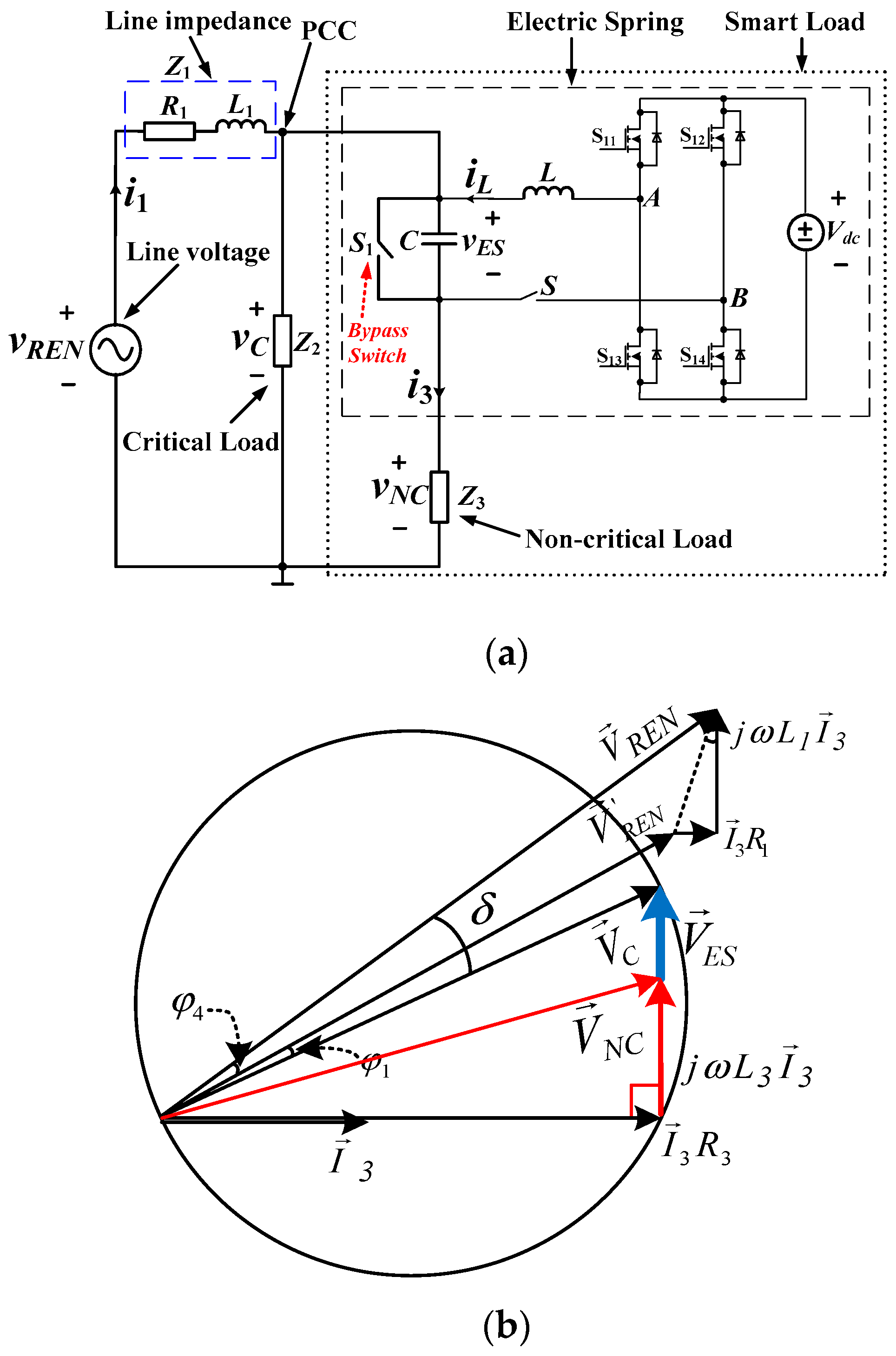
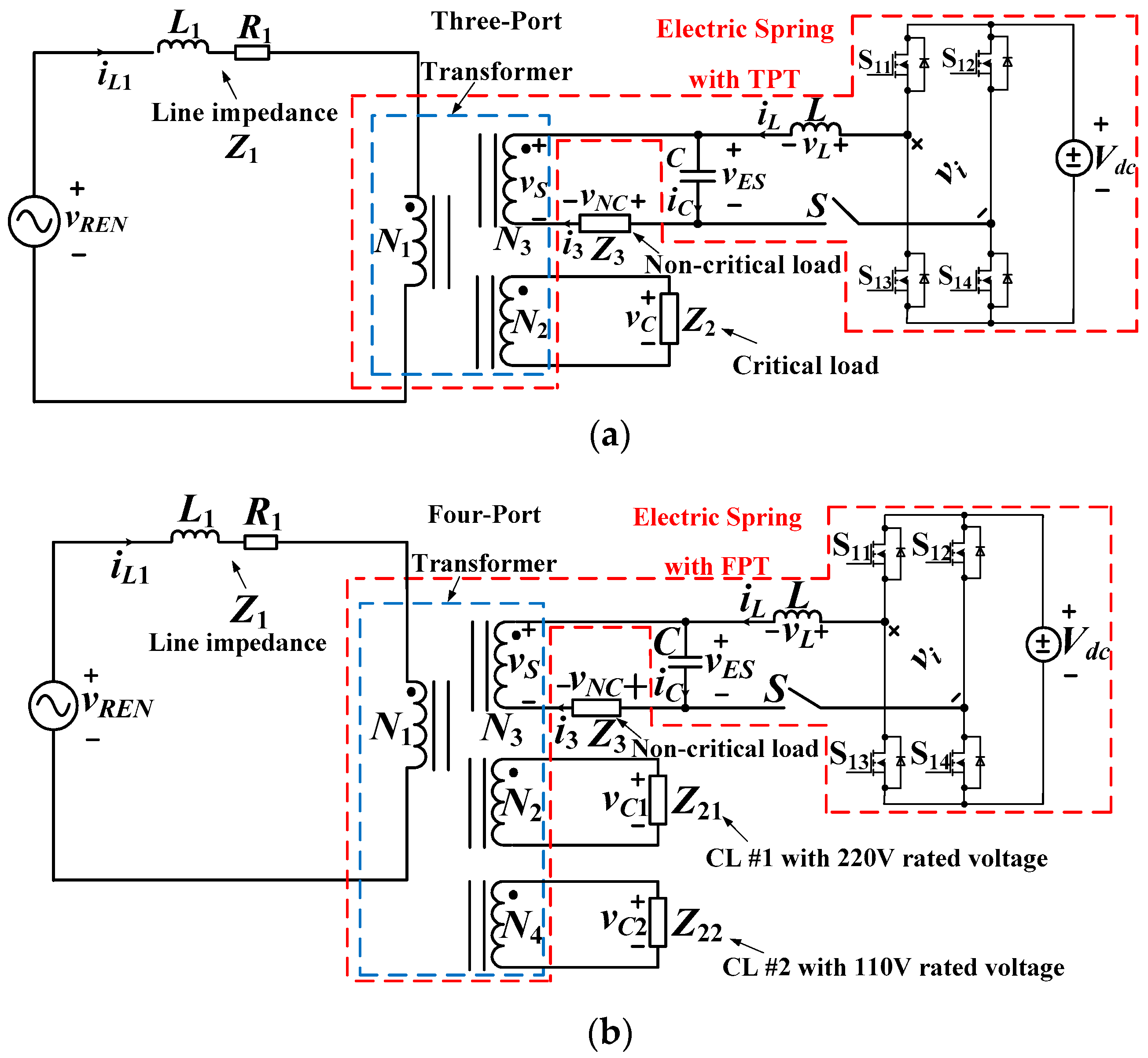

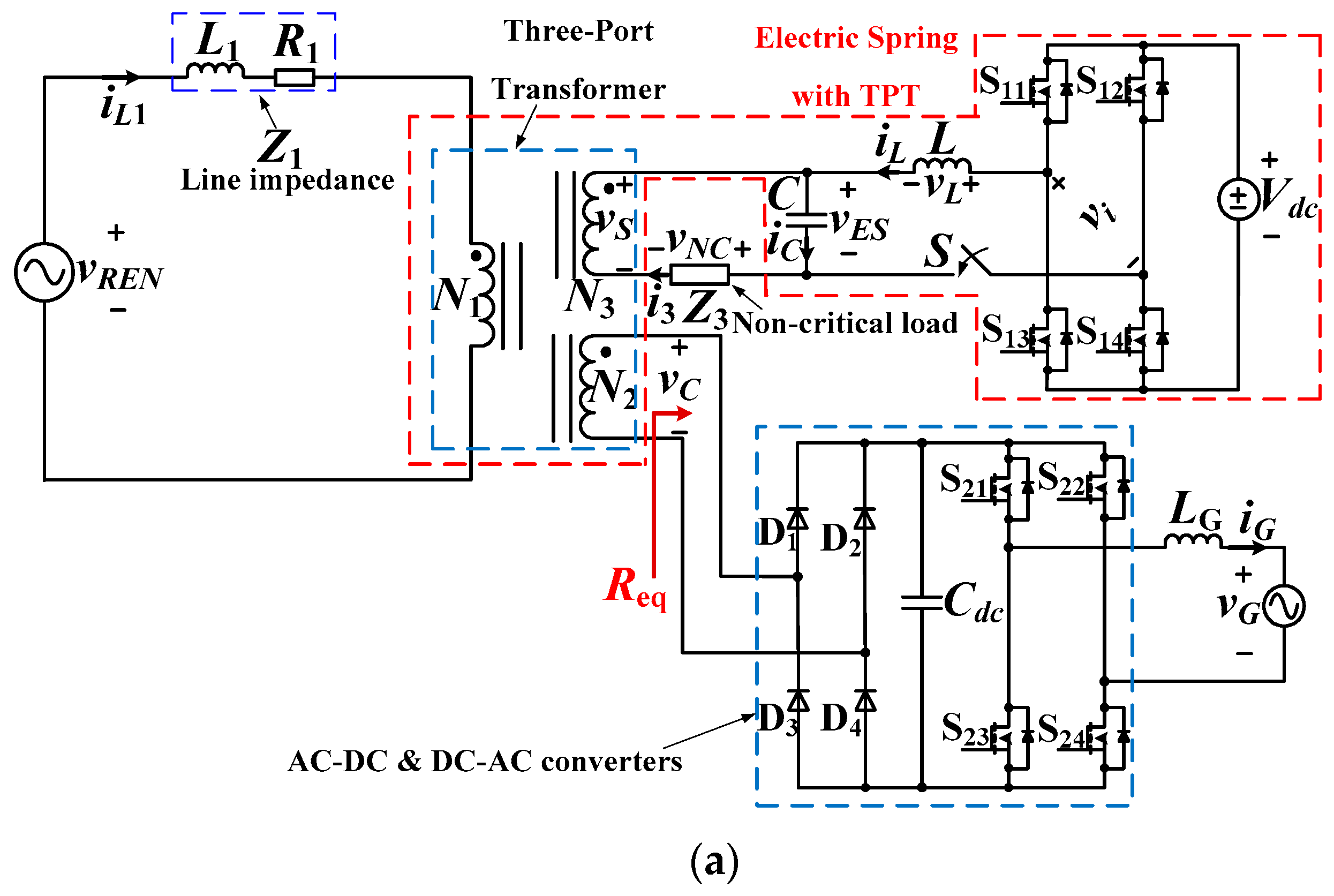

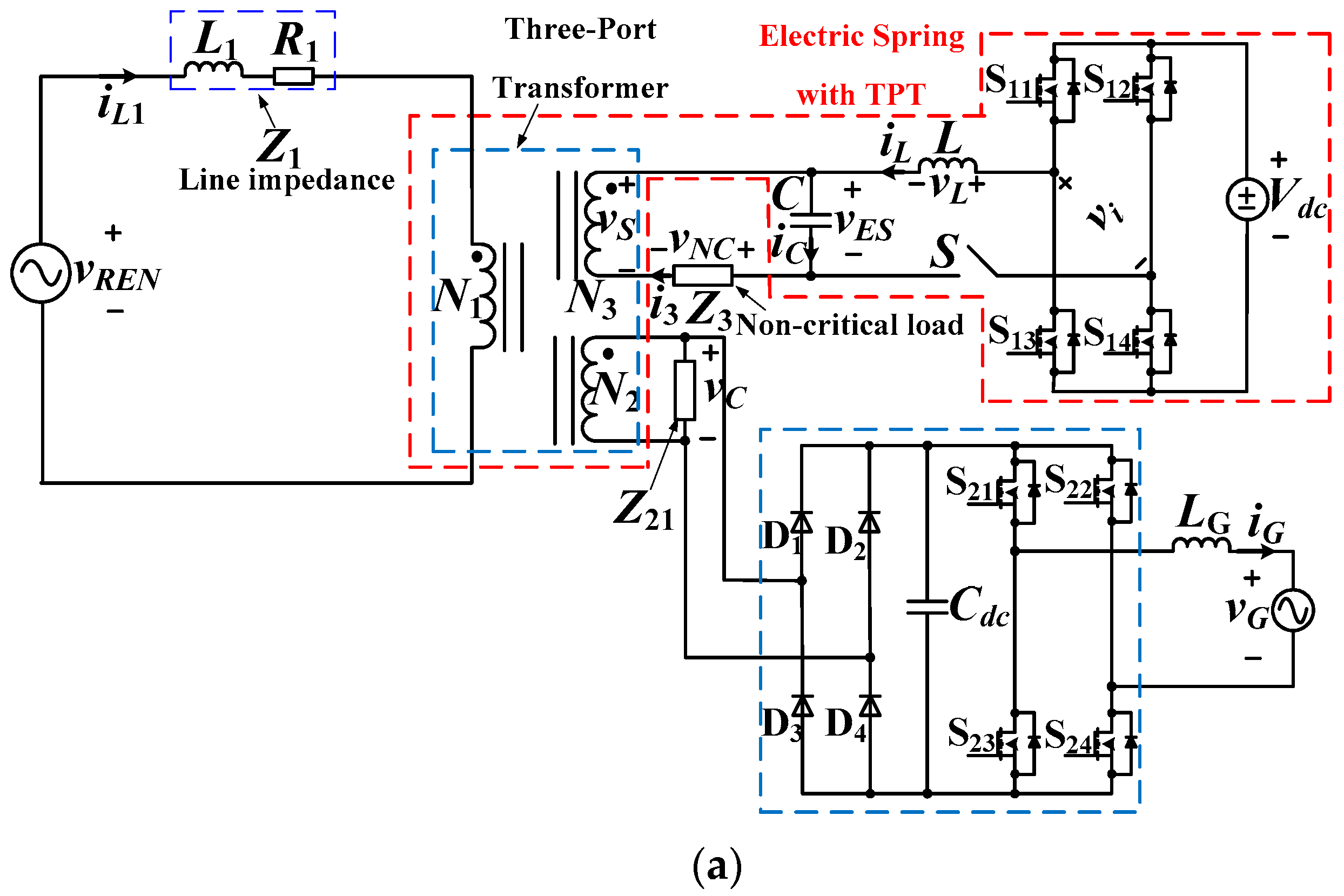
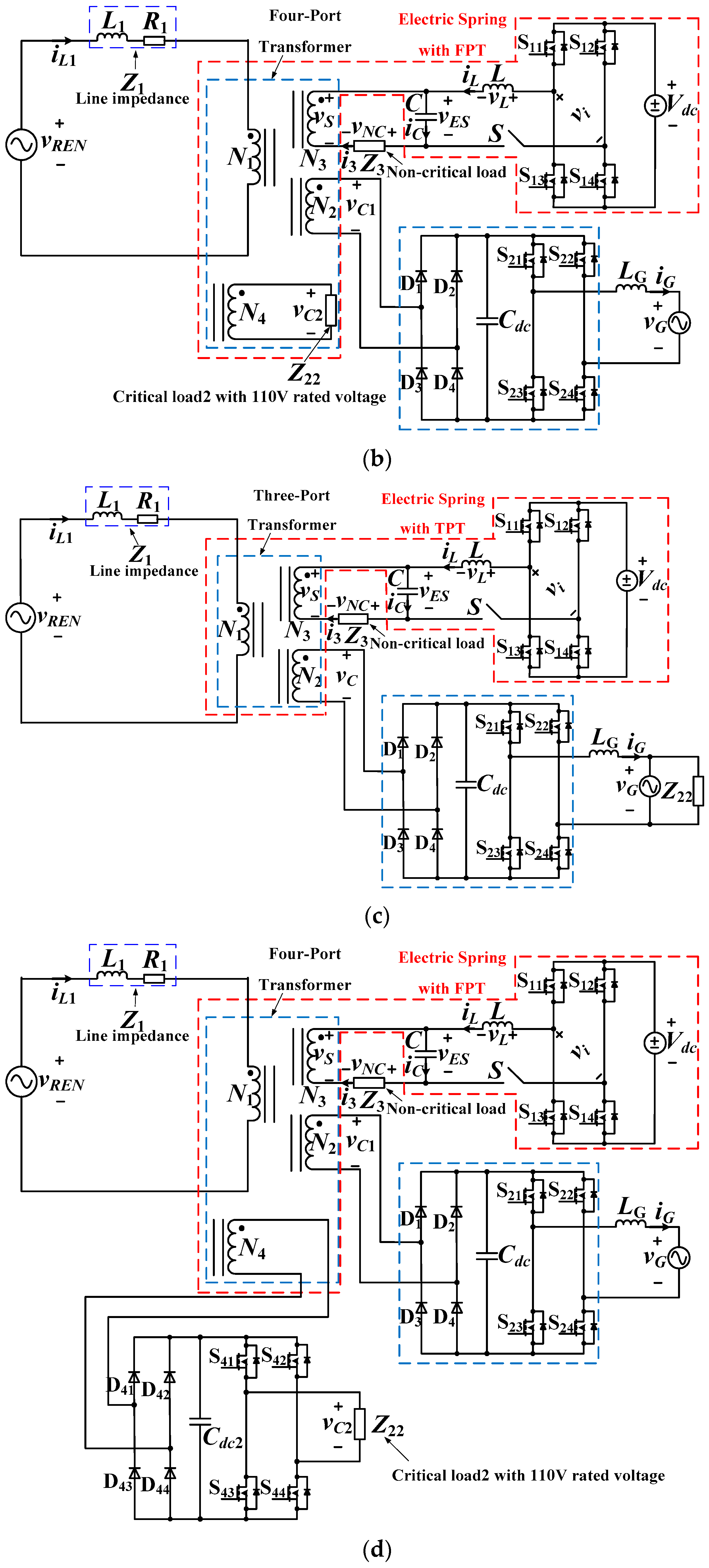
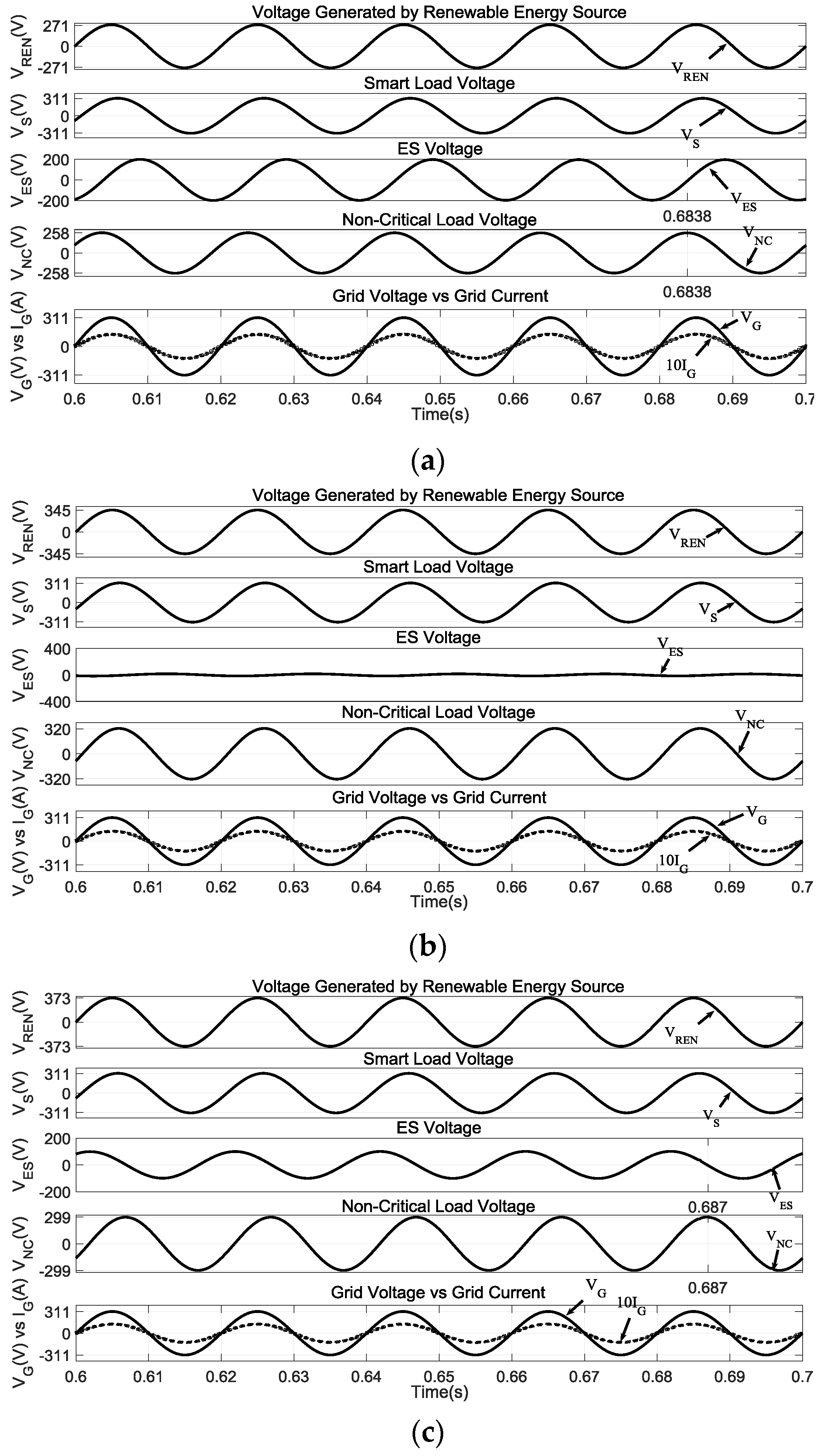
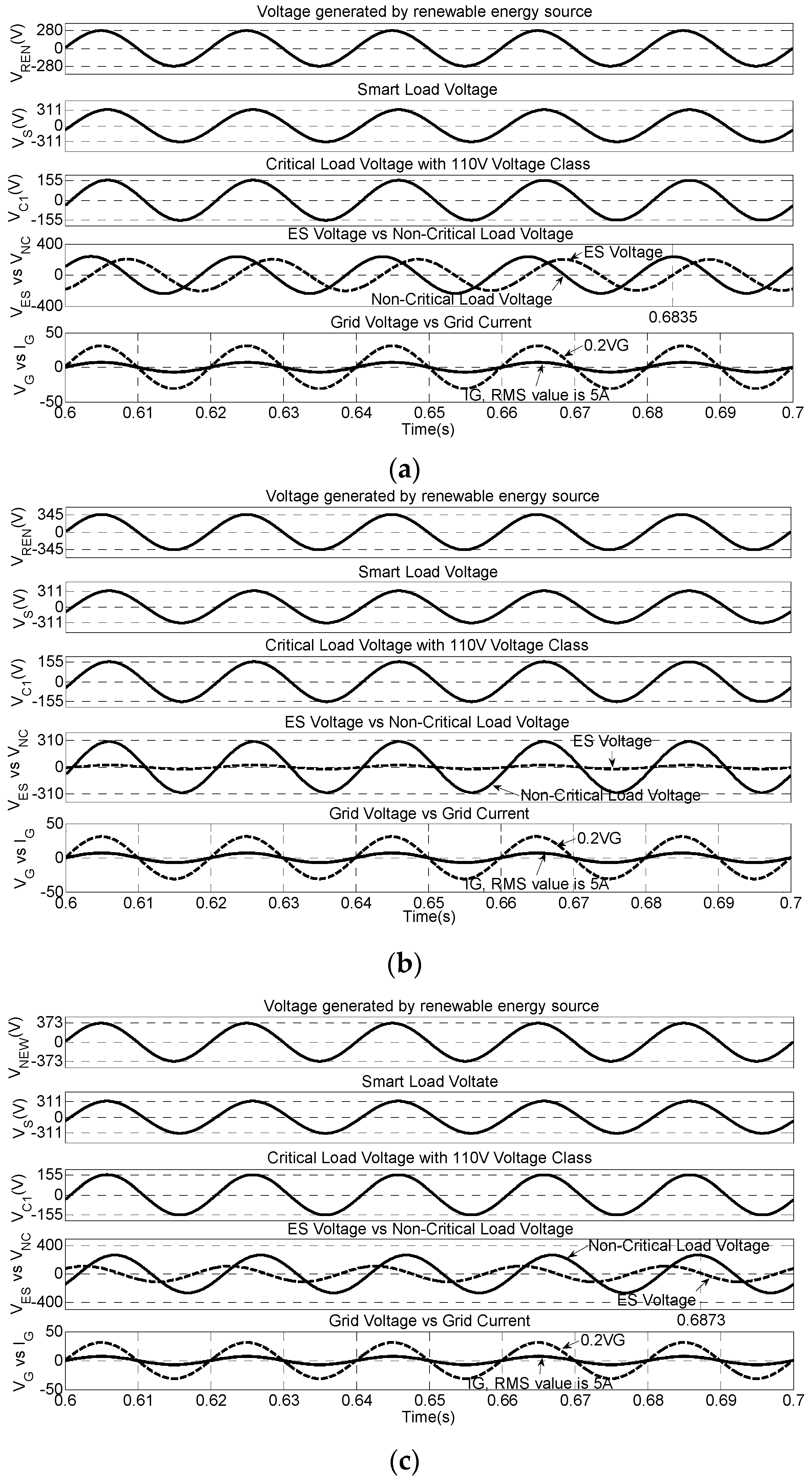
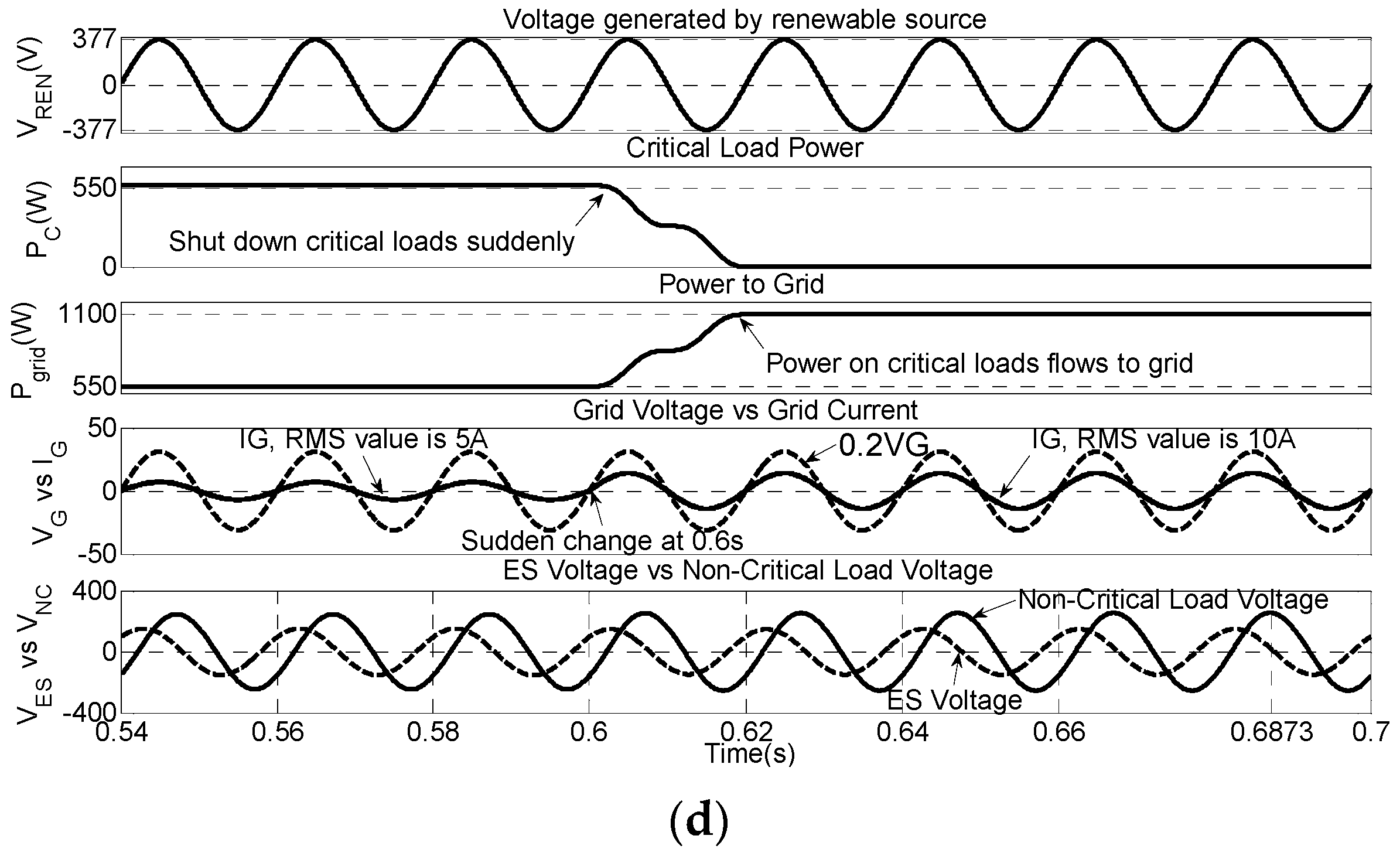
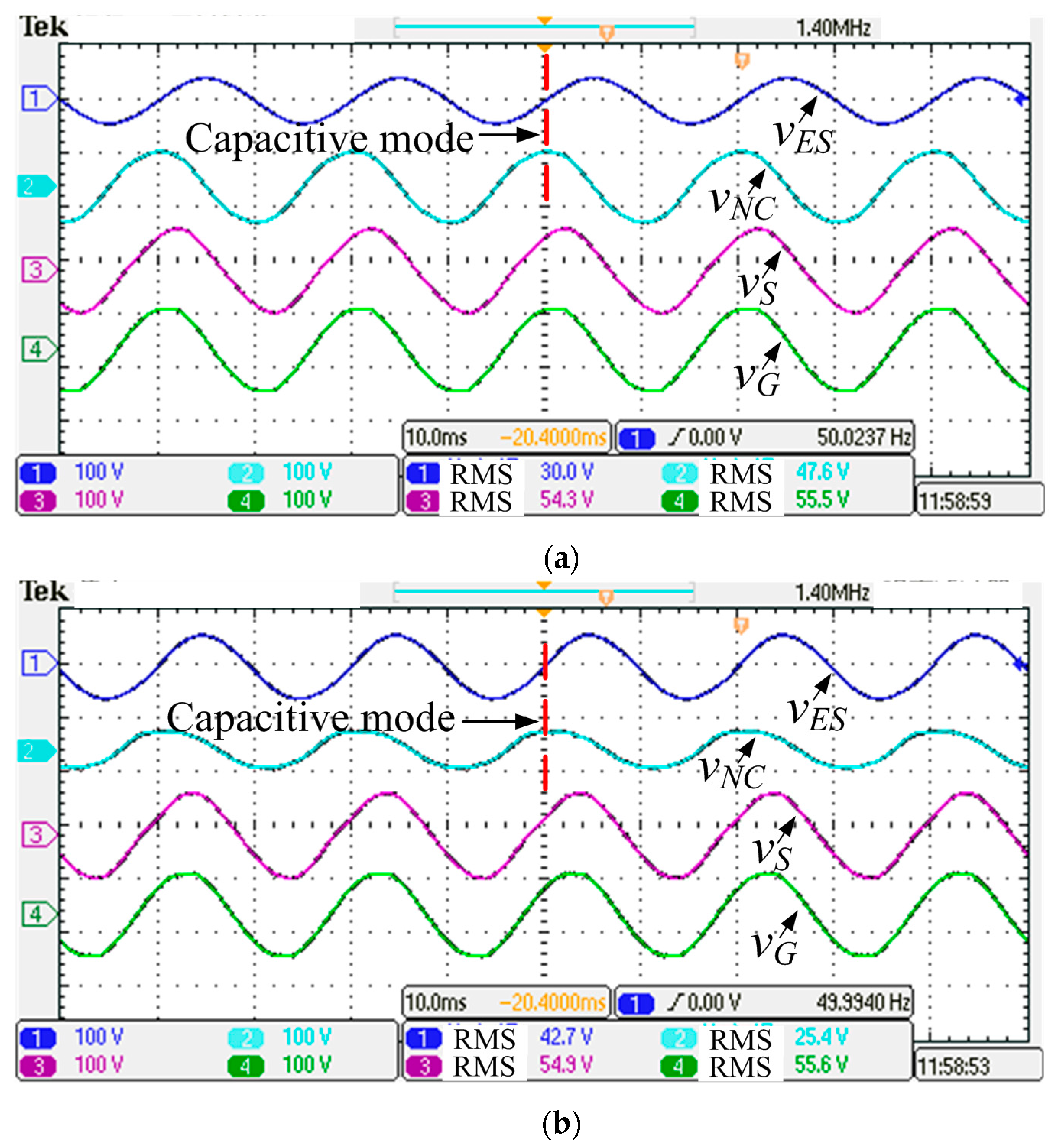
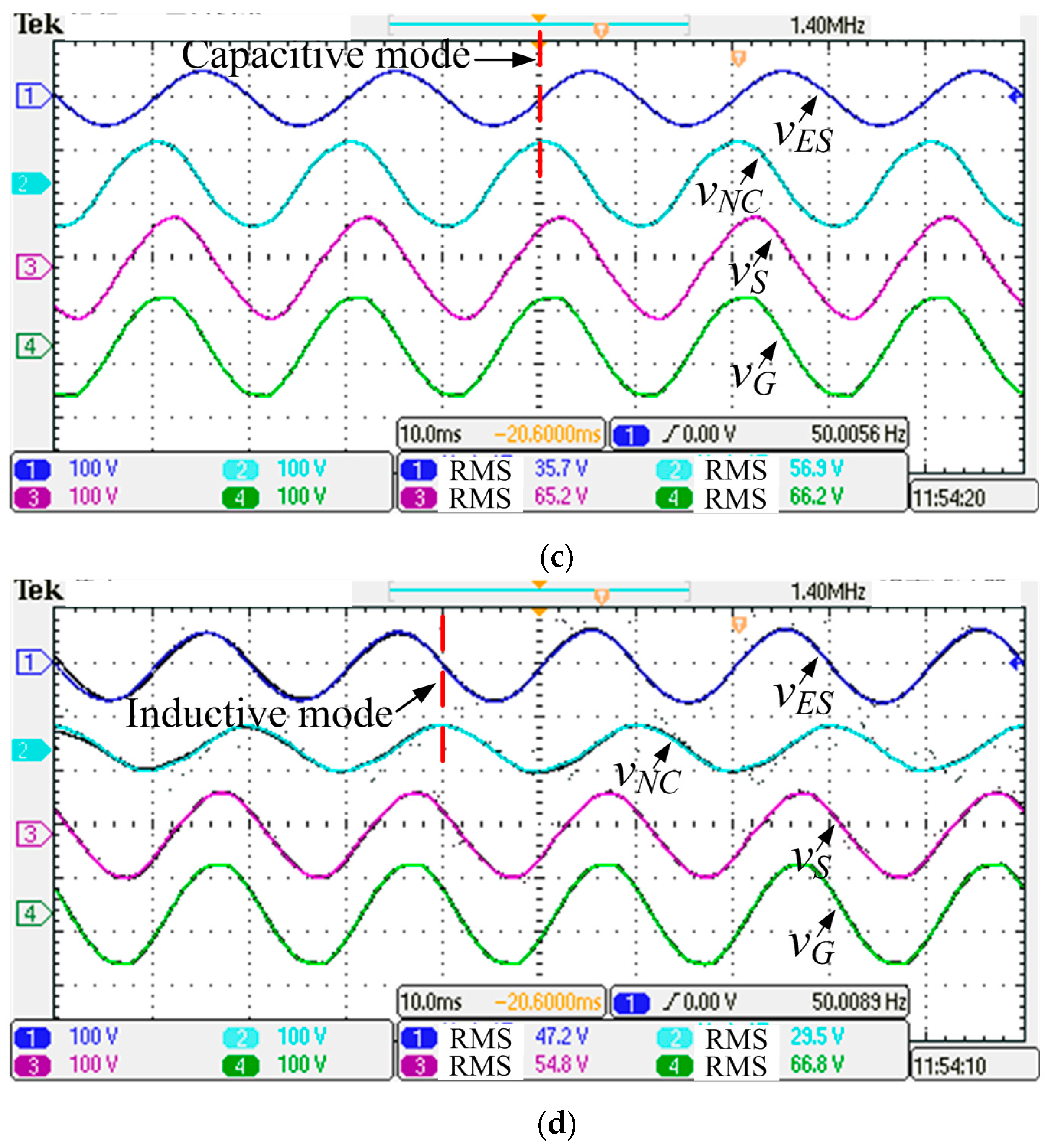
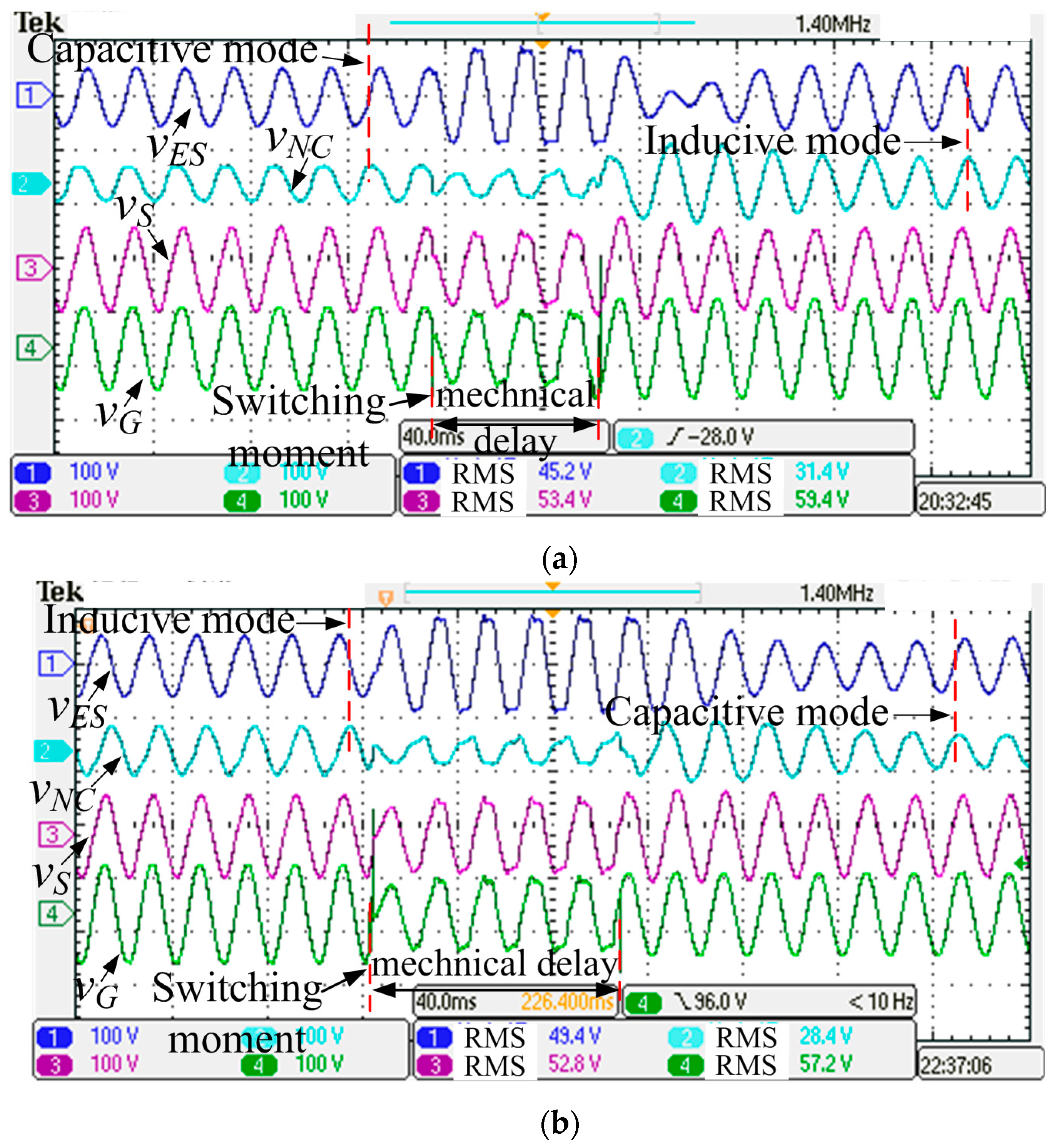
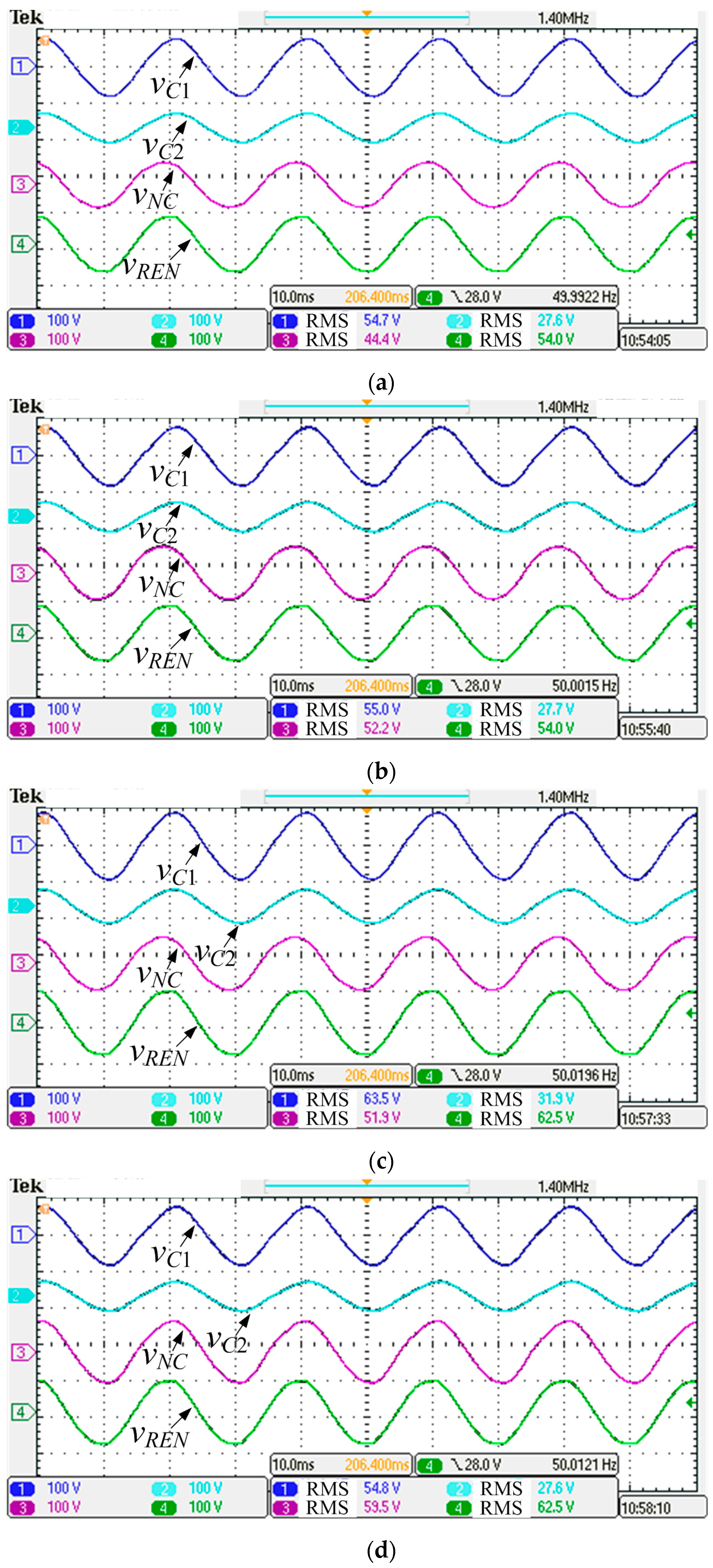
| Parameters | Values | Units |
|---|---|---|
| Regulated SL voltage (VS) | 220 | V |
| Battery voltage (Vdc) | 480 | V |
| Line resistance (R1) | 0.1 | Ω |
| Line inductance (L1) | 2.4 | mH |
| CL (Z2) | 44 | Ω |
| CL 1 (Z21) | 88 | Ω |
| CL 2 (Z22) | 22 | Ω |
| NCL (Z3) | 2.2 | Ω |
| Inductance of low-pass filter (L) | 3 | mHμ |
| Capacitance of low-pass filter (C) | 50 | μF |
| Turns ratio of the TPT (N1:N2:N3) | 1:1:1 | 1 |
| Turns ratio of the FPT (N1:N2:N3:N4) | 2:2:2:1 | 1 |
| Inductance of low-pass filter (LG) | 3 | mH |
| Grid voltage (VG) | 110 | V |
| Parameters | Values | Units |
|---|---|---|
| Regulated SL voltage (VS) | 55 | V |
| Battery voltage (Vdc) | 180 | V |
| Line resistance (R1) | 5.5 | Ω |
| Line inductance (L1) | 85.4 | mH |
| CL (Z2) | 2000 | Ω |
| CL 1 (Z21) | 4000 | Ω |
| CL 2 (Z22) | 1000 | Ω |
| NCL (Z3) | 100 | Ω |
| Inductance of low-pass filter (L) | 3 | mH |
| Capacitance of low-pass filter (C) | 50 | μF |
© 2017 by the authors. Licensee MDPI, Basel, Switzerland. This article is an open access article distributed under the terms and conditions of the Creative Commons Attribution (CC BY) license ( http://creativecommons.org/licenses/by/4.0/).
Share and Cite
Wang, Q.; Cheng, M.; Buja, G. Integration of Electric Springs and Multi-Port Transformers—A New Solution for AC Microgrids with Renewable Energy Sources. Energies 2017, 10, 193. https://doi.org/10.3390/en10020193
Wang Q, Cheng M, Buja G. Integration of Electric Springs and Multi-Port Transformers—A New Solution for AC Microgrids with Renewable Energy Sources. Energies. 2017; 10(2):193. https://doi.org/10.3390/en10020193
Chicago/Turabian StyleWang, Qingsong, Ming Cheng, and Giuseppe Buja. 2017. "Integration of Electric Springs and Multi-Port Transformers—A New Solution for AC Microgrids with Renewable Energy Sources" Energies 10, no. 2: 193. https://doi.org/10.3390/en10020193






